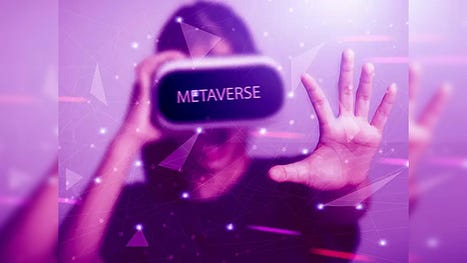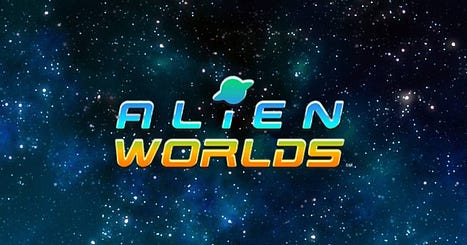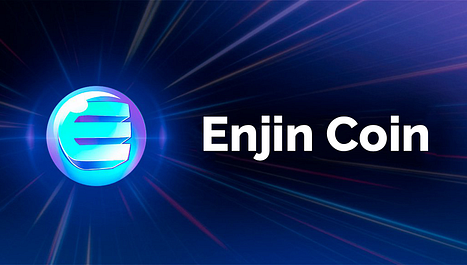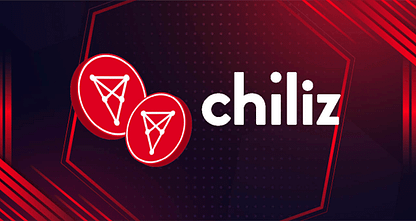5 Low Cap Metaverse Tokens Primed for 100X Growth in 2024
5 Low Cap Metaverse Tokens Primed for 100X Growth in 2024
Albert Peter
In the rapidly evolving landscape of digital assets, metaverse tokens have emerged as a promising investment opportunity, offering a gateway to virtual worlds and decentralized ecosystems. As the metaverse continues to expand, certain low cap tokens are positioned for exponential growth in 2024, presenting investors with a unique chance to capitalize on this burgeoning trend. These tokens, with their relatively low market capitalization, have the potential to deliver significant returns, potentially multiplying in value by 100 times or more.
Their appeal lies in their connection to innovative metaverse projects, which are reshaping industries such as gaming, entertainment, and virtual real estate. By investing in these metaverse tokens, investors can not only participate in the growth of the metaverse but also support the development of groundbreaking technologies that are redefining our digital future. As we delve into the specifics of these tokens, it becomes evident that they represent more than just financial assets; they are the building blocks of a new digital frontier, offering exciting opportunities for growth and innovation in the years to come.
Understanding Metaverse Tokens
Metaverse tokens are digital assets native to virtual worlds, representing ownership, access, or participation in these digital environments. These tokens leverage blockchain technology to provide a secure and decentralized way to transact within the metaverse. They are often used for various purposes, such as buying virtual goods, accessing exclusive content, or participating in decentralized governance. Unlike traditional cryptocurrencies like Bitcoin or Ethereum, which are generally fungible and used as a medium of exchange or store of value, metaverse tokens are often non-fungible and represent unique assets or rights.
They enable users to have true ownership of virtual assets, as the tokens are stored in their digital wallets and can be traded or transferred like physical goods. Additionally, metaverse tokens can also be used to incentivize participation in virtual economies or reward users for contributing to the development of the metaverse ecosystem. As the metaverse continues to expand and evolve, the role of metaverse tokens is expected to grow, offering exciting opportunities for users and investors alike to engage with this emerging digital frontier.
The Metaverse Market Landscape
The metaverse market landscape is a dynamic and rapidly evolving ecosystem that encompasses a wide range of virtual worlds, digital assets, and decentralized applications (dApps). At its core, the metaverse represents a collective virtual shared space that is created by the convergence of physical and digital realities. This digital universe is populated by a diverse array of participants, including individuals, businesses, and developers, who interact with each other and the environment using avatars and other digital representations.
The metaverse offers a wide range of opportunities and experiences, including virtual events, social interactions, gaming, education, commerce, and more. As the metaverse continues to grow, it is expected to become an increasingly integral part of our digital lives, offering new ways to connect, create, and collaborate in immersive and engaging virtual environments.
Criteria for Selecting Low Cap Metaverse Tokens
When selecting low-cap metaverse tokens, it’s crucial to consider several key criteria to mitigate risks and maximize potential returns. Here are some important factors to consider:
- Project Concept and Whitepaper: Evaluate the project’s whitepaper to understand its goals, technology, and roadmap. Look for innovative concepts and clear, achievable objectives.
- Team Background and Experience: Research the team behind the project. Check their track record, experience in the blockchain and metaverse space, and their ability to deliver on promises.
- Community and Social Media Presence: A strong, engaged community is essential for the success of a metaverse project. Look for active social media channels, community forums, and interactions with the team.
- Market Potential and Use Case: Assess the market potential for the project’s use case within the metaverse. Look for unique features that differentiate it from competitors.
- Tokenomics and Supply: Analyze the tokenomics of the project, including the token supply, distribution, and mechanisms for incentivizing stakeholders. Look for a fair and sustainable token model.
- Partnerships and Collaborations: Partnerships with other projects, platforms, or influencers can indicate credibility and potential for growth. Research the significance and quality of these partnerships.
- Technology and Development Progress: Evaluate the project’s technology stack, development progress, and roadmap milestones. Look for active development and regular updates.
- Security and Audits: Ensure that the project has undergone security audits from reputable firms to mitigate risks of vulnerabilities and exploits.
- Market Liquidity and Exchange Listings: Consider the liquidity of the token and its availability on reputable exchanges. Higher liquidity can make it easier to buy and sell the token.
- Regulatory Compliance: Ensure that the project is compliant with relevant regulations in its jurisdiction to avoid legal issues in the future.
By carefully evaluating these criteria, you can make more informed decisions when selecting low-cap metaverse tokens for investment.
5 Low Cap Metaverse Token
1. Alien Worlds (TLM)

Alien Worlds (TLM) is a decentralized, non-fungible token (NFT) metaverse, where players compete for scarce resources, Trilium (TLM), in a stimulated economy centered around planetary worlds.
Here’s a breakdown of Alien Worlds (TLM):
- TLM token is the fungible token that powers Alien Worlds. Players can earn TLM through various activities in the game, such as mining, staking, and participating in battles. TLM can also be used to purchase in-game items and to vote on proposals that affect the future of the game.
- Planets are the foundation of the Alien Worlds metaverse. Each planet is a Decentralized Autonomous Organization (DAO), which means that it is governed by its community of players. Players can stake their TLM tokens on a planet to earn voting rights and influence the decisions that are made.
- NFTs represent in-game items such as land, avatars, and tools. Players can use NFTs to improve their chances of earning TLM and to participate in special events.
2. MANTRA DAO (OM)
Mantra DAO (OM) is an integrated ecosystem of Decentralized Finance (DeFi) services built on multiple blockchain technologies. Here’s a breakdown of key points about MANTRA DAO (OM):
- DeFi Services: Mantra DAO offers a suite of DeFi functionalities including staking, lending, and governance. Users can stake their crypto holdings to earn rewards, borrow crypto assets, and participate in voting on proposals that shape the platform’s future.
- Community Governance: Mantra DAO prides itself on being community-driven. Holders of the OM token, the platform’s native cryptocurrency, have voting rights on proposals that influence the protocol’s development and direction.
- Karma Protocol: An interesting feature of Mantra DAO is the Karma protocol, which acts as a reputation system. It assesses user behavior and tracks token holder performance, potentially influencing their ability to participate in certain activities within the platform.
Here are some additional details about MANTRA DAO (OM):
- Price: The price of OM is around $0.68 with a recent downward trend.
- Total Supply: The total supply of OM tokens is capped at 888,888,888.
- Background: The project started development in late 2019 and launched its protocol in early 2021.
- Mantra Chain: Mantra DAO is also developing its own Layer 1 blockchain called Mantra Chain, focused on regulatory compliance for real-world asset tokenization. While this is a separate project, it’s part of the larger Mantra ecosystem vision.
3. Enjin Coin (ENJ)

Enjin Coin (ENJ) is a cryptocurrency designed specifically for the gaming industry and the metaverse. It is a considered “low-cap” anymore, but it plays a foundational role in the play-to-earn and metaverse space. Here’s a breakdown of Enjin Coin (ENJ):
What is Enjin Coin (ENJ)?
- A platform for Virtual Goods: Enjin provides a platform and tools for game developers to create and manage virtual goods within their games. These virtual goods can be represented as non-fungible tokens (NFTs) on the Ethereum blockchain.
- ENJ as Backing: The value of these NFTs is backed by ENJ coin. When a developer creates an NFT using the Enjin platform, a certain amount of ENJ coin is locked away, essentially taking it out of circulation and potentially increasing the value of remaining ENJ tokens.
- Use Cases in Games: ENJ can be used for various purposes within games that utilize the Enjin platform:
- Purchasing NFTs: Players can use ENJ to buy in-game items, avatars, or other digital assets.
- Trading NFTs: The Enjin Marketplace allows players to trade their ENJ-backed NFTs with other players.
- Earning Rewards: Some games might reward players with ENJ for completing tasks or participating in the game world.
Benefits of ENJ for the Metaverse
- Interoperability: A key advantage of Enjin is that NFTs created on the Enjin platform can potentially be transferred between different games that use Enjin. This fosters a more interconnected metaverse experience where players can carry their virtual goods across different virtual worlds.
- Verified Ownership: By leveraging blockchain technology, ENJ-backed NFTs provide players with verifiable ownership of their digital assets. This can be especially valuable in the metaverse where virtual items can hold significant worth.
- Reduced Fraud: The transparency and security of the blockchain helps reduce the risk of fraud or duplication of virtual goods within the metaverse.
Overall, Enjin Coin (ENJ) is a major player in the metaverse by providing the infrastructure for creating and managing secure, verifiable virtual goods. A “low-cap” cryptocurrency anymore, it has established itself as a cornerstone for in-game assets and potential future metaverse applications.
4. Chiliz (CHZ)

Chiliz (CHZ)is a exactly a low-cap token anymore. While it started out as a low-cap project, it has grown in popularity and market capitalization. However, it does function within the metaverse and focuses on fan engagement through fan tokens.
Chiliz is the digital currency that powers Socios.com, a platform that allows sports fans to purchase Fan Tokens for their favorite teams. These Fan Tokens provide various benefits and voting rights to token holders. They can be used to influence club decisions on things like jersey designs, stadium experiences, and exclusive content.
Here’s a breakdown of how Chiliz (CHZ) connects to the metaverse:
- Fan Token Utility in the Metaverse: As the metaverse continues to develop, Fan Tokens issued through Chiliz could potentially provide access to exclusive metaverse experiences for token holders. Imagine using your Fan Tokens to attend virtual concerts or interact with players in a metaverse environment built around your favorite team.
- Esports and Metaverse Integration: Esports are a major force in the metaverse, and Chiliz is already involved in esports through partnerships with various teams and organizations. This connection positions Chiliz to potentially play a role in the convergence of esports and the metaverse.
Overall, while Chiliz (CHZ) is a low-cap metaverse token, it has a strong presence within the metaverse through its role in Fan Tokens and its connections to esports.
5. Ultra (UOS)

Ultra (UOS) is a blockchain-based platform designed to disrupt the traditional gaming industry by offering a more equitable and decentralized ecosystem for gamers, developers, and influencers. Here’s a closer look at Ultra (UOS):
What is Ultra (UOS)?
- Gaming Hub: Ultra aims to be a one-stop shop for gamers, providing a variety of features within its ecosystem:
- Game Discovery: Explore and discover new and popular games.
- Game Store: Purchase downloadable games directly on the Ultra platform.
- Marketplace: Buy, sell, and trade digital in-game items like virtual goods, skins, and collectibles. These items are represented as non-fungible tokens (NFTs) for secure ownership.
- Streaming and Tournaments: Watch live streams, participate in esports tournaments, and potentially earn rewards.
- Community Features: Connect and interact with other gamers through forums and chat functionalities.
- Decentralized Focus: Ultra utilizes blockchain technology to empower users and create a more transparent environment.
- Ownership: Players have true ownership of their digital assets through NFTs. These assets can be freely traded on the Ultra platform or external marketplaces.
- Fair Revenue Distribution: Ultra aims to provide a fairer revenue split for game developers compared to traditional distribution platforms.
- Community Governance: Holders of the UOS token can participate in voting on proposals that affect the future development of the Ultra platform.
UOS Token:
- Utility Token: The UOS token is the lifeblood of the Ultra ecosystem. It’s used for various purposes within the platform:
- Purchases: UOS is required to purchase games, and digital items, and participate in certain features like tournaments.
- Staking and Rewards: Users can stake UOS to earn rewards and potentially gain access to exclusive benefits.
- In-game Utility: Some games integrated with Ultra may utilize UOS within their economies.
- Project Status: Ultra is still under development, but it has a roadmap and a growing list of partnerships with gaming companies.
Overall, Ultra (UOS) presents itself as an alternative to traditional gaming platforms, offering a more user-centric approach with features like digital asset ownership and the potential for fairer revenue distribution for developers.
Project Status: Ultra is still under development, but it has a roadmap and a growing list of partnerships with gaming companies.
Conclusion
In conclusion, the metaverse presents a dynamic landscape of opportunity, and these five low cap tokens are positioned to be key players in its evolution. As we look ahead to 2024, the potential for 10X growth in these tokens is not just a possibility but a tangible reality. By investing in these tokens, investors can not only potentially reap substantial financial rewards but also contribute to the development of a new digital paradigm.
The metaverse is more than just a concept; it is a rapidly growing ecosystem that is poised to revolutionize how we interact, transact, and experience the digital world. As such, these metaverse tokens represent not just an investment opportunity but a chance to be part of a transformative movement that is reshaping the future. As with any investment, it is crucial to conduct thorough research and due diligence before making decisions, but for those willing to take the plunge, the potential rewards are undoubtedly enticing.
























































